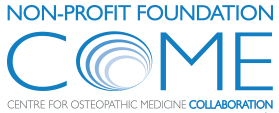European research Priorities for Osteopathic Care (PROCare): a sequential exploratory investigation and survey
| By Patrick van Dun | 0 Comments
European research Priorities for Osteopathic Care (PROCare): a sequential exploratory investigation and survey
The aim of this study is to identify and analyse research priorities across the osteopathic profession internationally, to determine how different interested parties conceptualise research importance and to examine how contextual factors influence research prioritisation … MORE







